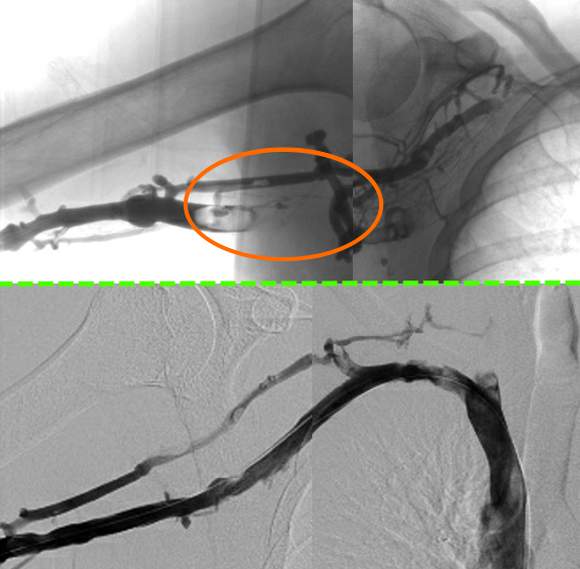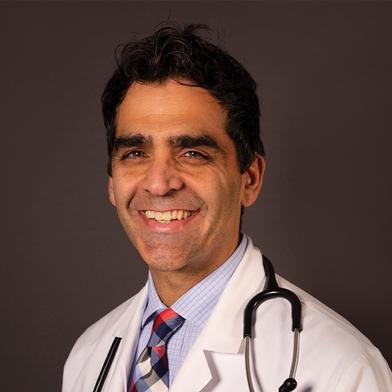It was the first day of August. Diane and Eric Briese, of Pleasant Prairie, were looking forward to their daughter’s wedding the following week. But Eric’s body was making different plans.
“I went to the emergency department with a swollen arm, thinking that I got stung by a spider or a bee or something,” recalled Eric. “But they couldn’t see any sign of an insect bite, so they gave me an ultrasound. It turned out that I had a large blood clot in my upper right arm.”
Eric was initially given a prescription for blood thinners that would dissolve the clot over time. However, with the rehearsal dinner and wedding just days away, time was something that Eric had precious little of.
That’s when Dr. David Knight, an oncologist and hematologist with the Froedtert South Medical Group, suggested an alternative treatment plan - a plan Diane said, “That Dr. Knight thought was the best route for us to go.”
ANOTHER OPTION
"Dr. Knight told me he had done some research and talked to other physicians,” Eric said. “I was amazed that he took that amount of personal interest in my case.”
Knight recognized that a vein in Eric’s chest had been damaged during strenuous activity, possibly Eric’s weightlifting. To treat the resulting blood clot more quickly, Knight brought in his Froedtert South Medical Staff colleagues Dr. David Curry and Dr. Michael Ginsburg. Both are vascular and interventional radiology physicians who use catheters guided by sophisticated imaging technology to diagnose and treat a variety of medical conditions in virtually every part of the body.
AN AGGRESSIVE TREATMENT PLAN
Ginsburg and Curry recommended that Eric undergo a procedure called a transcatheter thrombolysis. “Both doctors explained everything in laymen’s terms,” Diane said. “They came down to our level and put it into words we could understand. They used analogies, and it was really easy to understand what they were going to do.”
In an operating room specially equipped for these minimally invasive procedures, Dr. Curry inserted an infusion catheter into the vein just below the blood clot in Eric’s arm. “The catheter is very tiny,” Curry said. “We put it right where the clot was and we just dripped clot dissolving medicine on it all night. It's just like a soaker hose you put in your garden. Sometimes, we need to do this for two or three days, but I told Eric, ‘I know you’ve got a wedding. I understand that. My daughter just got engaged. I get it.’ I told him it would be a semi-miracle if he made it to the wedding, because it usually doesn’t go that fast, but we’d give it our best shot.”

Eric Briese and daughter Ashley
MIRACLES HAPPEN
And a semi-miracle is what they got. The following day – Thursday morning, the day of the rehearsal dinner – Curry and Ginsburg checked on Eric’s progress. “We saw that most of the clot was gone,” Ginsburg said, “and we used suction to remove the rest of the clot and then we opened up the vein with a balloon.”
“I came out and told his wife, ‘Guess who’s going to the rehearsal dinner!’" Curry said. “'Tell your daughter he’s coming.'”
“Everyone was saying, ‘We’ve got to get you to that wedding,'" Eric recalled, “and I made it. I was able to walk my daughter down the aisle.”
And a couple days after the wedding, Eric got a call from Dr. Curry. “He said ‘We’re all just wondering how the wedding went,’” Eric said. “Who does that? Who gets that anymore?”

Before & After treatment. Top - blood flow blocked. Bottom - normal blood flow.
LEADING EDGE CARE CLOSE TO HOME
In Kenosha County, more people are certainly getting the benefits of this leading edge care, as Curry and Ginsburg use interventional radiology to deliver precise, targeted treatments for a growing list of health conditions, including complex and life-threatening diseases.
“This is modern medicine,” Curry said. “Interventional radiology is modern medicine. It’s usually less invasive, with lower risk, less time in the hospital, faster patient recovery, and less costly.”
“This shows people in Kenosha County that they can get up-to-date treatment for a lot of conditions that previously required surgery, in a minimally invasive way, with a tiny incision and a Band-Aid at the end, and not have to travel to Milwaukee or Chicago to get that done,” Ginsburg said.
At Froedtert Kenosha Hospital and Froedtert Pleasant Prairie Hospital, Curry and Ginsburg are surrounded by specialists who are available should complications arise, and they consult often with their colleagues at the Froedtert & the Medical College of Wisconsin health network for patients with the most challenging of conditions.
“We were nothing but impressed with the physicians who treated me,” Eric said. “I don’t think you can beat them. They were phenomenal, and I’d tell anybody that. Some people might say, ‘If I had to have that done, I’d go to Milwaukee.’ But I got very good and personalized care right here in Kenosha County. It’s just nice to have it close to home when you need it.”



